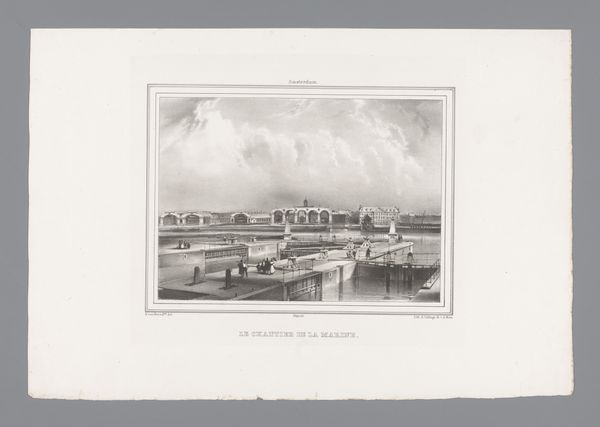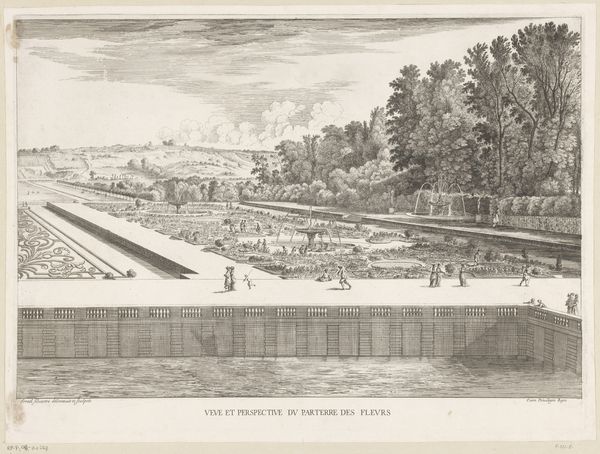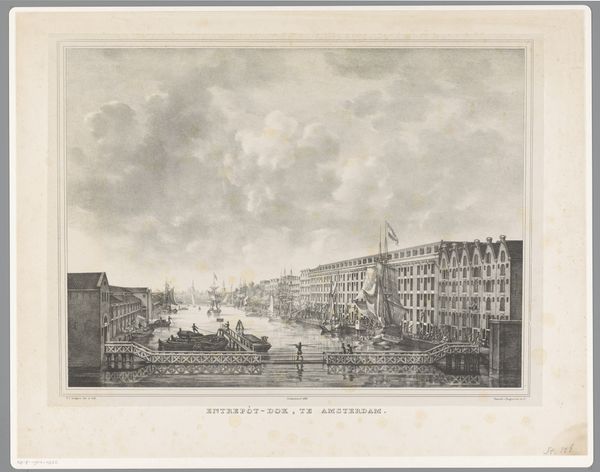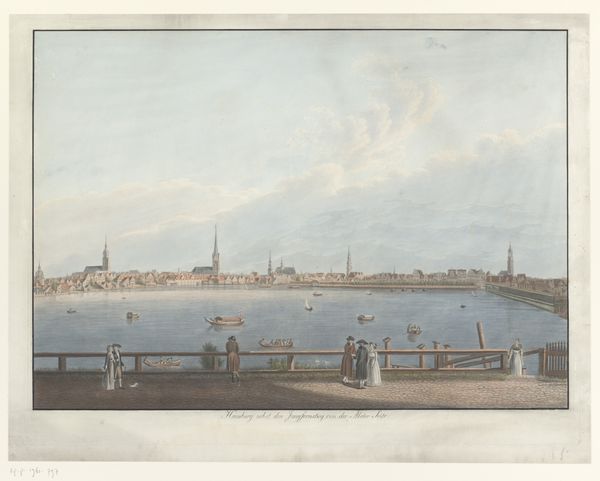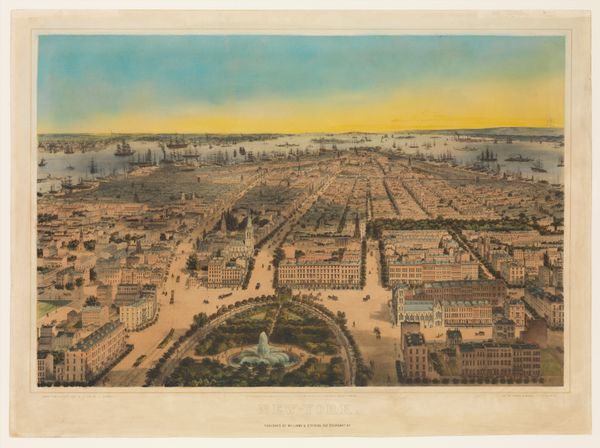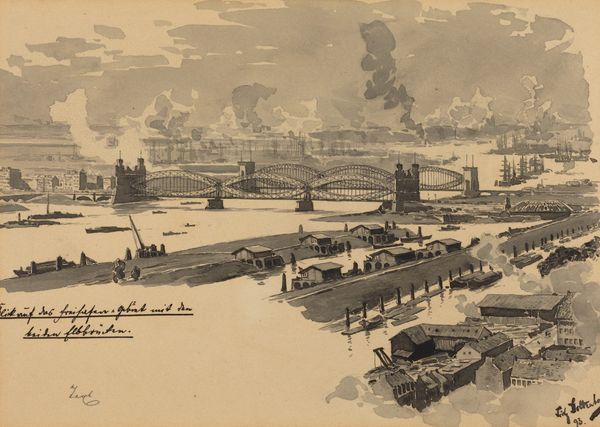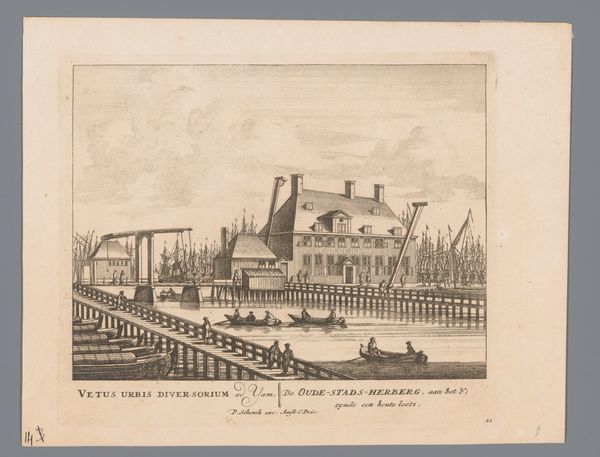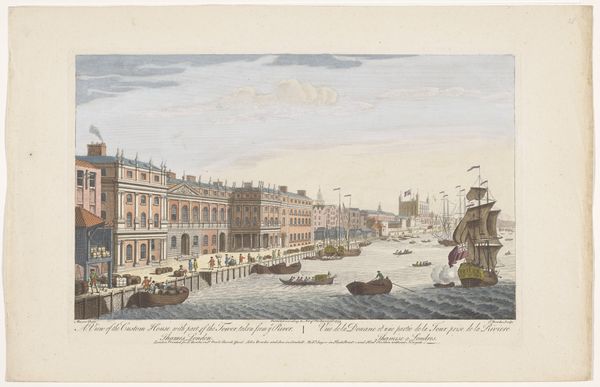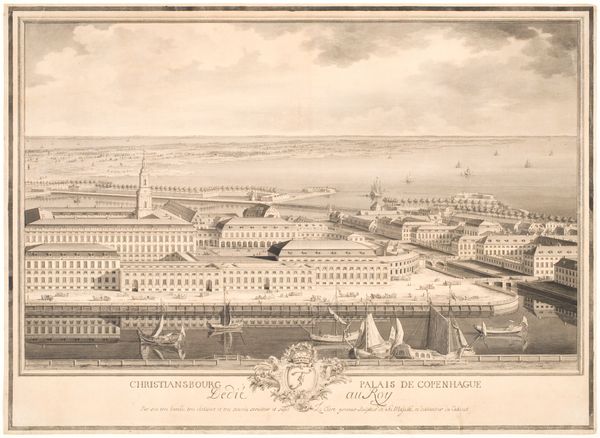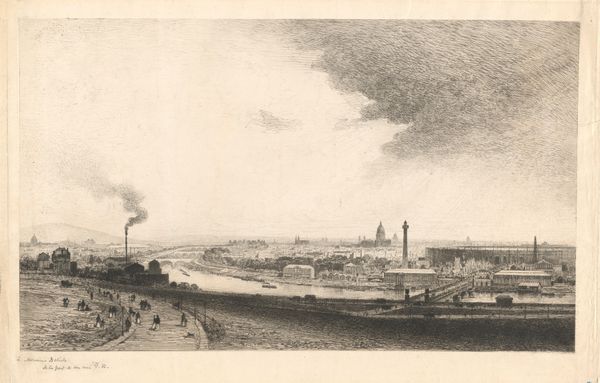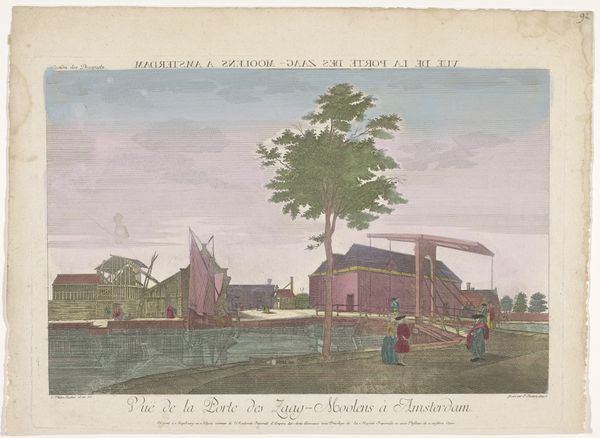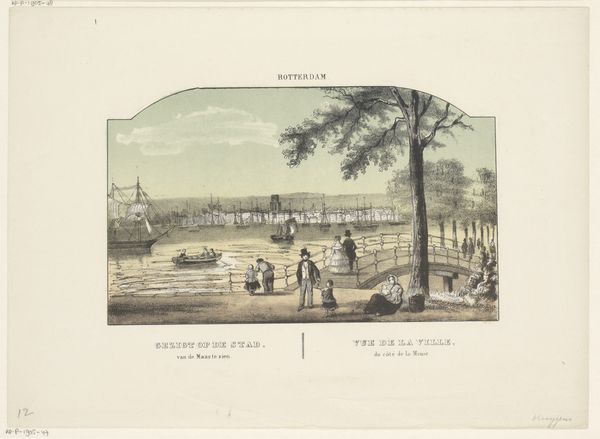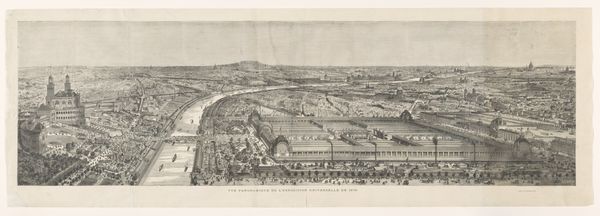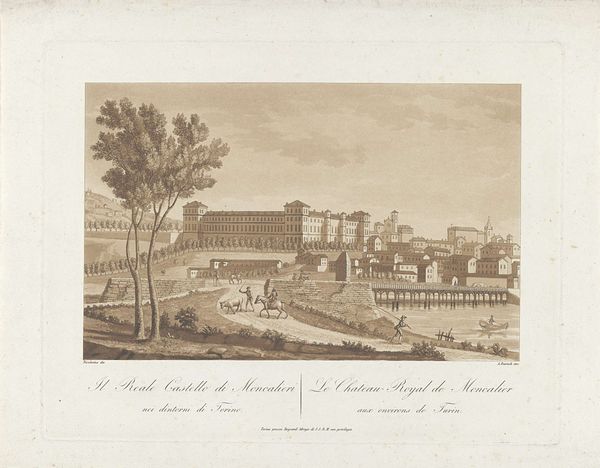
Castle Garden Landing for Emigrants, Barge Office, Battery 1850 - 1900
0:00
0:00
drawing, lithograph, print
#
drawing
#
boat
#
16_19th-century
#
lithograph
#
ship
# print
#
landscape
#
cityscape
Dimensions: 11 x 8 9/16 in. (28 x 21.7 cm)
Copyright: Public Domain
Editor: Here we have "Castle Garden Landing for Emigrants, Barge Office, Battery," a lithograph, drawing and print made sometime between 1850 and 1900 by Charles Magnus & Company. Looking at the piece, I am struck by its panoramic view of New York. It has a sense of organized chaos with so much happening. How do you interpret this work? Curator: This image isn't just a landscape; it's a portal into a crucial period of American history, specifically immigration. "Castle Garden" operated as the New York State Emigrant Landing Depot, before Ellis Island. It became the point of entry for millions of immigrants, largely from Europe. Notice how the composition directs your eye – the ships bringing people in, then the figures disembarking, heading towards the city. Editor: So it's a document of a very specific, and important, experience. I guess I wasn't thinking about that when I thought about chaos. It makes more sense when framed like that. Curator: Precisely. And it’s not a neutral one. The sheer volume of immigrants coming through had complex impacts, stirring anxieties about labor competition, nativism, and the changing social fabric of America. What does the rendering style evoke for you? Editor: It feels very orderly, almost idealized, compared to the actual potential disarray of such an arrival point. Curator: Exactly. There is also that it elides many of the harsh realities faced by these newcomers, like poverty, discrimination, and exploitation. These new immigrants who were mostly poor also didn't get any assistance. How might we read this through a contemporary lens of border politics and social justice? Editor: Wow. I hadn't considered it from that angle at all. Now, I see how something seemingly straightforward shows so much social and political history. Curator: It reminds us to question whose stories are told, and how. What you originally saw as chaos now appears very intentional, very deliberately framed and curated. Editor: This has given me so much to think about regarding visual storytelling and historical context! Curator: Me too. This underscores art’s capacity to shape and reflect cultural narratives.
Comments
No comments
Be the first to comment and join the conversation on the ultimate creative platform.
